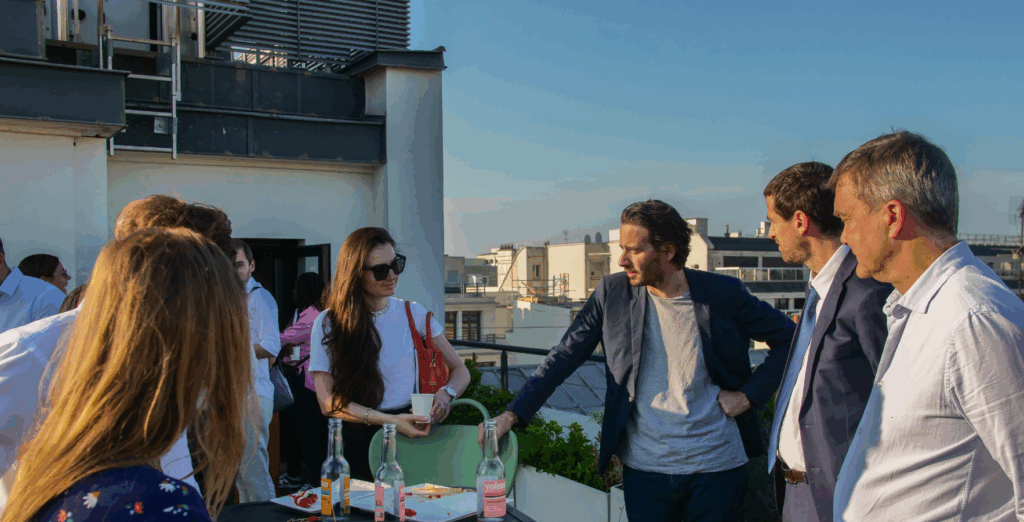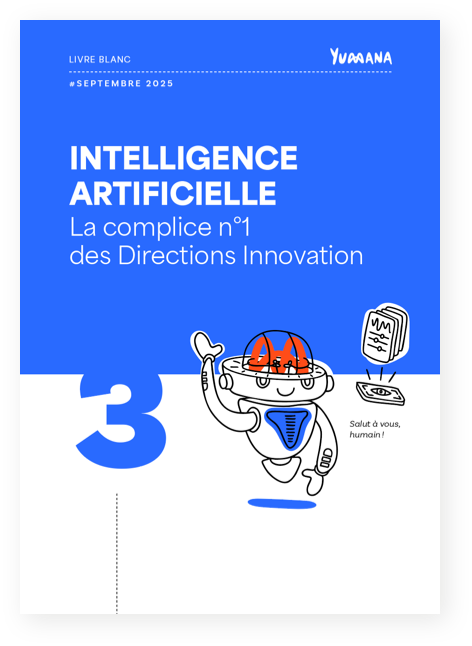Economic uncertainty, geopolitical tensions, and the imperative for transformation are reshaping the innovation landscape. Far from being a mere bonus, innovation is now a survival reflex for businesses. This is precisely what we explored during our panel discussion, “How to Innovate in Times of Crisis?”, with valuable insights from three experts in rapidly changing sectors: Stéphane Lasfargue (Renault Group), Josselin Quignon (NGE), and Jean-Daniel Kuhn (SETEC).
Their testimonies resonated with a strong conviction we share at Yumana: in times of crisis, innovation changes its face.
So, are crises the unexpected allies of innovation?
Here’s what we learned.
Innovation: From “Nice-to-Have” to Operational “Must-Have”
The automotive sector is undergoing a profound upheaval. Faced with strategic uncertainty and budgetary pressures, innovation at Renault Group is an absolute necessity to stay afloat and adapt.
For the construction sector, the crisis acted as a trigger: innovation is not measured by the boldness of an idea anymore, it’s measured by the impact on the ground: carbon reduction, eco-design, biodiversity, and more. Josselin Quignon confirms that at NGE, innovation supports change management and is integrated into customer cycles.
This shift, which transforms innovation into a lever for resilience rather than distant inspiration, is central to our thinking at Yumana. As explained in this article on the paradox of corporate innovation, large groups are both best equipped to innovate… and most inclined to slow down the movement.
During times of crisis, this tension becomes even more visible: constrained budgets, fear of failure, internal resistance. Innovating then requires not only good ideas but also a conducive environment for them to survive, materialize… or be expressed elsewhere.
Inspiration No Longer Just Comes from the Top… or from Europe
The observation is clear: China is no longer a follower, but a leader, particularly due to its capacity for accelerated industrialization. Chinese leadership in industrialization, such as car batteries, forces us to reconsider our models in Europe, where resources are more limited and collaborations more fragile.
The key advice from Stéphane Lasfargue of Renault Group is a call to action: “Change route”. We shouldn’t wait for innovation to be dictated from above. It must assert itself, be driven by those on the ground, and draw inspiration from what’s being done elsewhere, even off the beaten path. Jean-Daniel Kuhn of SETEC agrees: knowledge isn’t reserved for Europe. We need to seek ideas internationally, for example, by drawing inspiration from frugal innovation in Brazil, which demonstrates a complete paradigm shift.
These approaches highlight the importance of collective intelligence and sharing best practices, a central theme discussed during the round table. Our speakers were unanimous: innovation is no longer a solo effort or the responsibility of a single department. It’s a matter of system, collaboration, and networking.

Innovation as a Business and Transformative Lever
At SETEC, they emphasize that innovation only has value if it creates concrete value. In a context of tight margins, it becomes strategic when it helps win a tender, for example. This means bringing innovation departments closer to operations and business. The innovation department can no longer be content with its historical role as a facilitator or technology watch; innovation must become a full-fledged business function, fully connected to value creation and the transformation of the economic model.
This point is crucial and aligns with our analysis of the discreet yet vibrant innovation that emerges daily. It’s neither labeled nor always formalized, but it produces results. The challenge is no longer so much about generating ideas as it is about inventorying what’s already working and leveraging it.
→ Read also – Innovation Under Pressure: Revealing What Works and Scaling It Fast
What if Innovation Also Lies in What Already Exists?
Our speakers unanimously highlighted a crucial point: crises invite us to refocus.
What if innovation resided in the existing? The challenge would no longer be to reinvent everything, but to amplify what’s already working.
This approach transforms the role of innovation programs. It’s about identifying successes on the ground, effective adjustments, and local innovations that, when deployed on a larger scale, could produce a significant impact. Companies like L’Oréal successfully structure this approach with Yumana, through recognition rituals and platforms for sharing concrete solutions.
Conclusion
Far from grand promises, innovation in times of crisis, as described by our experts, is frugal, connected to reality, and profoundly collective. It draws from reality, relies on the collective, and moves forward through iterations.
It’s a reinforcing dynamic, with a simple yet demanding goal: to no longer aim for the “wow” effect, but for sustainable results.
What if that’s precisely its greatest strength? The ability to reconcile frugality and innovation, to refuse the sterile opposition between ambition and economy. By anchoring innovation in concrete actions and leveraging collective intelligence, companies demonstrate their resilience in the face of crisis. Ultimately, innovation becomes what connects teams, illuminates decisions, and reopens perspectives where urgency might otherwise narrow them.
Looking to structure a pragmatic and sustainable innovation approach?
At Yumana, we help companies reveal, amplify, and deploy solutions that are already working.
Let us solve your challenges. Contact us to learn more.

CEO & Co-Founder Yumana




